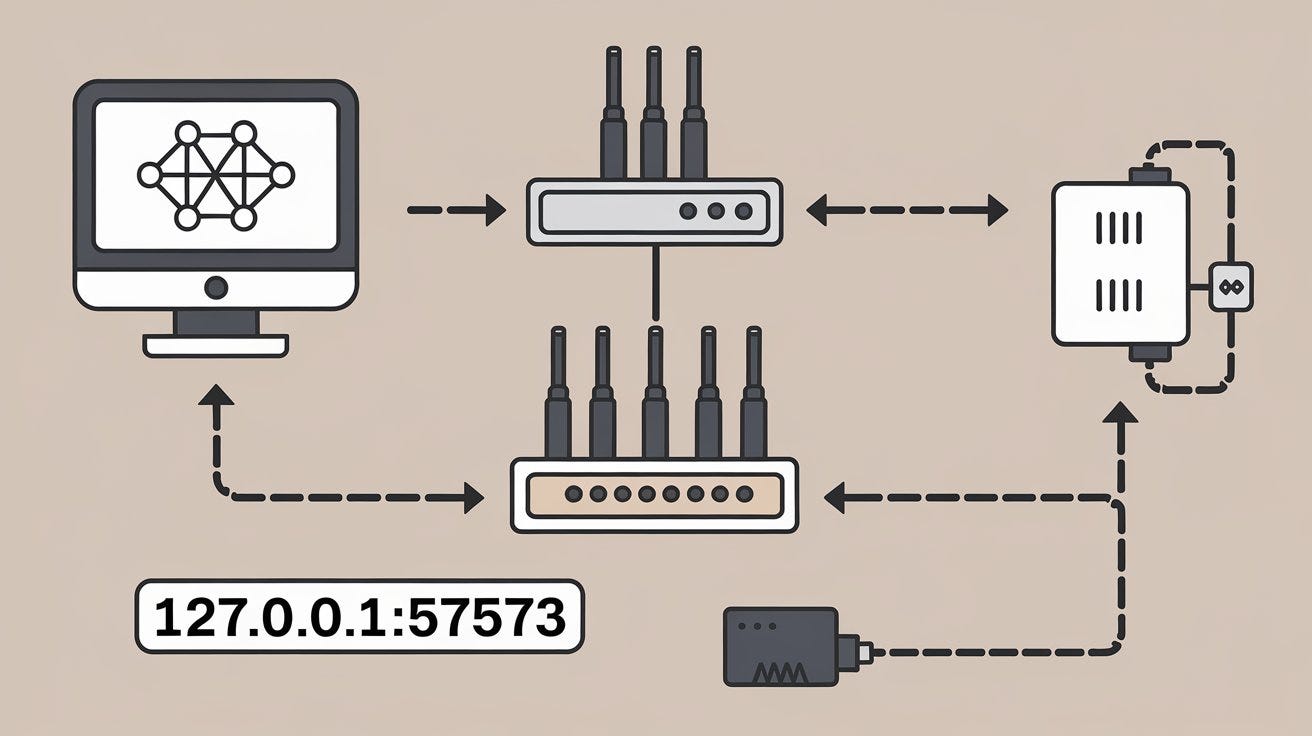127.0.0.1:57573: A Deep Dive into Localhost and Port Numbers
Understanding 127.0.0.1:57573: A Deep Dive into Localhost and Port Numbers
127.0.0.1:57573:
The keyword “127.0.0.1:57573” might seem technical or confusing for those unfamiliar with networking concepts, but it represents something fundamental to web development, system configuration, and network troubleshooting. In this article, we will break down what 127.0.0.1 means, the role of port numbers, and how they both work together to create a functioning network environment. Specifically, we will also explore the significance of the 57573 port, its common uses, and how you can troubleshoot issues related to it.
What is 127.0.0.1?
The Concept of Localhost
Before delving into port numbers and their significance, it’s essential to understand what 127.0.0.1 represents. In networking, 127.0.0.1 is commonly known as the localhost. This is the IP address that refers to the local machine, or the computer that you are currently using.
The localhost is a loopback interface used to communicate with yourself — in other words, it allows you to run programs, servers, or web applications locally on your machine without having to connect to an external network or another computer. This IP address is especially crucial during development processes when testing applications before deploying them on live servers.
Key Features of Localhost:
- Testing Environment: It provides a safe, closed environment to test web applications, APIs, or servers.
- Loopback Function: The system sends data back to the same device that initiated it, hence the name “loopback.”
- No External Connection: Using 127.0.0.1 allows developers to work offline, without an internet connection, or without exposing their work to the wider web.
In essence, 127.0.0.1 is a virtual interface created by the operating system for internal communication.
What is a Port Number?
Understanding Ports in Networking
The second part of the keyword, 57573, is a port number. Port numbers are like the doorways through which different applications and services communicate with one another on the same IP address. Every network service that uses the internet or local network relies on ports to send and receive information.
Types of Ports
Ports are identified by numbers ranging from 0 to 65535 and are classified into three categories:
- Well-Known Ports (0-1023): These are reserved for specific services such as HTTP (80), HTTPS (443), and FTP (21). They are typically standardized and widely recognized.
- Registered Ports (1024-49151): These ports are used by software companies for specific applications. For example, 3306 is the default port for MySQL.
- Dynamic or Private Ports (49152-65535): These ports are used by applications for temporary communication. They are often allocated by the operating system when establishing a connection, and 57573 falls under this category.
How Ports Work with IP Addresses
An IP address, like 127.0.0.1, identifies the location of a device in a network. However, many applications can run simultaneously on a single machine. To handle multiple processes, each running service or application is assigned a port number.
For example:
- A web server could run on 127.0.0.1:80 (the default port for HTTP).
- A database service could be hosted on 127.0.0.1:3306.
Ports and IP addresses together make communication more efficient by allowing multiple applications to coexist on the same device without conflict.
The Role of Port 57573
Now that we understand the basics of IP addresses and port numbers, let’s focus on port 57573. While not associated with a specific standard service, it could be dynamically allocated by your operating system or used by a custom application.
Common Scenarios Involving Port 57573:
- Temporary Local Services: Many local services that do not have a dedicated, well-known port are assigned to higher, dynamic port numbers like 57573. For instance, you might find a web application or API running locally on this port during the development process.
- Proxy Services: If you are using a proxy server, VPN, or other network redirection tools, port 57573 could be assigned to handle specific tasks or routes.
- Application Debugging: In many development environments, tools like Node.js, Python’s Flask, or Docker may use a random port like 57573 for debugging purposes.
How to Find Which Application is Using Port 57573
If you want to identify which application is using port 57573 on your system, you can use a few simple methods depending on your operating system.
On Windows:
- Open Command Prompt.
- Type
netstat -ano | findstr 57573and press Enter. This will show the process using the port. - To find more details about the process, use Task Manager to search for the process ID (PID).
On macOS or Linux:
- Open a terminal window.
- Type
lsof -i :57573and press Enter. This will show the process utilizing that port.
Both methods will help you identify the exact service or application running on 127.0.0.1:57573.
How to Use 127.0.0.1:57573 in Web Development
Localhost Testing
As mentioned earlier, 127.0.0.1 is often used for local testing during the development of websites, APIs, and applications. When paired with a port number like 57573, it could represent a locally running service that needs to be tested before deployment.
For example, a web developer may launch a web application using a tool like Node.js, which would assign it a port such as 57573. The developer would then access the application via the 127.0.0.1:57573 address to test its functionality.
Advantages of Local Testing:
- Fast Feedback: You don’t have to deploy changes to a live server to see the results.
- Error Isolation: Errors or bugs found in the localhost environment don’t affect users or the public.
- Security: Local testing environments are not exposed to potential threats from the internet.
APIs and Database Servers
When building applications that rely on API calls or databases, you can also utilize 127.0.0.1 to ensure that local connections are functioning correctly. It’s common for developers to spin up a database server or an API on a dynamic port like 57573 and then interact with it locally.
For instance, you could configure a MySQL database to run locally on 127.0.0.1 but on a non-standard port for testing purposes, such as 57573. This separation ensures that testing does not interfere with a live production database.
Debugging Locally with Port 57573
Many modern Integrated Development Environments (IDEs) and debugging tools allow developers to set breakpoints and inspect code during runtime. This is often done using localhost addresses and dynamic ports like 127.0.0.1:57573.
For example, Visual Studio Code has built-in support for debugging Node.js applications, where the application might run on a dynamic port like 57573, and the developer can use localhost to view real-time outputs, errors, and logs.
Troubleshooting Issues with 127.0.0.1:57573
Common Issues
- Port Conflicts: Sometimes, multiple applications may attempt to use the same port, leading to conflicts. If another service is already using 57573, the second service won’t start properly. You can resolve this by either changing the port number or stopping the conflicting service.
- Firewall or Security Software Blocking: Firewalls or security software might block connections to 127.0.0.1:57573, especially if they are deemed suspicious. Ensure that you configure any firewalls or security settings to allow traffic to this port when necessary.
- Application Crashes: If an application using 127.0.0.1:57573 crashes or doesn’t start correctly, you can use system logs or debugging tools to pinpoint the issue.
Steps to Troubleshoot:
- Check the status of the port using netstat or lsof (as mentioned earlier).
- Restart the application using port 57573 to see if the issue persists.
- Adjust firewall settings to allow local traffic through the port.
- Review application logs for error messages that might indicate why the service on port 57573 is failing.
Conclusion
The combination of 127.0.0.1 (localhost) and a port number such as 57573 is fundamental in networking, especially for developers working on local projects. This setup allows testing of applications, services, and servers without the need for external networks or public IP addresses. Understanding how localhost and port numbers work together will help you troubleshoot issues, optimize your development process, and ensure secure, conflict-free configurations.
By mastering how to interact with 127.0.0.1:57573, you can confidently set up, run, and debug applications in a local environment, ensuring smoother transitions to production environments. Whether you’re a developer, system administrator, or network engineer, these foundational concepts are essential for successful project outcomes.














Post Comment